October 2024 Greensheet Market Analysis: Major Auctions Attract More Than $16 Million
Two recent auctions have brought strong prices.
Since the publication date of our last issue there have been two major offerings of U.S. currency, one each by Stack’s Bowers and Heritage. As we mentioned last month, the Stack’s Bowers sale was part of their larger Global Showcase sale while the Heritage auction was part of their annual Long Beach sale.
The Global Showcase sale was anchored by the Porter Collection and featured a total of 889 lots across two sessions, four of which achieved a six-figure price. Total prices realized approached $6 million, with the top lot being an elusive 1864 $50 Interest Bearing Note (Fr.-203), graded PMG VF25 with minor Restoration that sold for $126,000. Remarkably, three of the top six lots were Interest Bearing Notes, something we will explore a little later in this article. In second place came a rare type, an Original Series $100 National Bank Note (Fr.-454a) from the state of New Jersey which brought $114,000.
In the Heritage Long Beach sale there were 13 lots that achieved six-figure prices from a total of 1,543 lots, bringing the total sales to $10.4 million. The sale was led by a stunning and record-shattering Series 1928 $5,000 Federal Reserve Note (Fr.-2220E). Issued by the Richmond Federal Reserve district, this note is certified PMG Gem Uncirculated-65, making it the finest extant 1928 $5,000 by a long margin. Last publicly available in 1996, this landmark note sold for $780,000. This was followed by another 1928 Richmond Fed, a $10,000 denomination (Fr.-2230E) at $384,000. With all due respect to the other top lots, I wanted to highlight the eighth-place lot because it both highlights the growth of the currency market and is a very unlikely coincidence. This is because there was another 1864 $50 Interest Bearing Note (Fr.-203) in the Heritage sale, which sold for nearly equal to that of the top Stack’s Bowers lot at $120,000. Keep in mind that there are only six examples of this note available for collectors to own, with one other housed in the National Numismatic Collection. The probability of two Fr.203’s being publicly available in the space of a few weeks is very, very low! That both examples were eagerly scooped up by collectors and did not pass or miss their reserves is a testament to the advancement of currency collecting. As a rule in U.S. numismatics, the more obscure or specialized an item or series, the more subject it is to large price variance. Interest Bearing Notes, like Compound Interest Notes and Refunding Certificates, have traditionally fallen outside of the more “mainstream” series such as Legal Tenders and Gold and Silver Certificates. Perhaps collectors are realizing, thanks to new scholarship and greater access to information, that these notes’ historical significance is equal to or exceeds their numismatic rarity, and that they are a necessary part of a comprehensive collection of United States paper money. Interest Bearing notes, which technically fall under the category of Treasury Notes, have a long and complex history that is deeply tied to the evolution of our nation’s banking and monetary system. In the case of the 1864 $50, it was authorized by the Act of Congress of March 3, 1863, which was a gargantuan $900 million spending bill. $300 million was authorized for the rest of 1863 and $600 million for the year 1864. Such deficient spending was needed during the throes of the Civil War, as thousands of Union soldiers were owed back pay. The note, which significantly has the phrase “This Note Is A Legal Tender For Fifty Dollars” in the top margin, promised the bearer a return of 5% per year after a period of two years and were originally issued with three interest coupons. The notes were printed by the Treasury Department from plates produced by American Bank Note Company—a story in its own right. $150 million worth of these “interest coupon” notes in four denominations were issued in early 1864, but were quickly replaced by non-coupon notes, of which 136,000 were issued for a total circulation of $6,800,000. The non-coupon notes had a date stamp in red ink from which the interest would begin to accrue, and the two notes sold recently were just 11 days apart: the Heritage note with a date of April 13, 1864 and the Stack’s Bowers note with April 2, 1864. Now here 160 years later they were in close proximity again. According to the Bruyer reference, there was just $1,050 worth of unredeemed non-coupon 5% $50 and $100 notes as of 1869. The two other Interest Bearing notes sold by Stack’s Bowers mentioned above were a July 15, 1865 $50 (Fr.-212dI) at $108,000 and an 1863 $20 one year 5% note at $84,000. These are truly special pieces in the context of American economic history.

Download the Greysheet app for access to pricing, news, events and your subscriptions.
Subscribe Now.
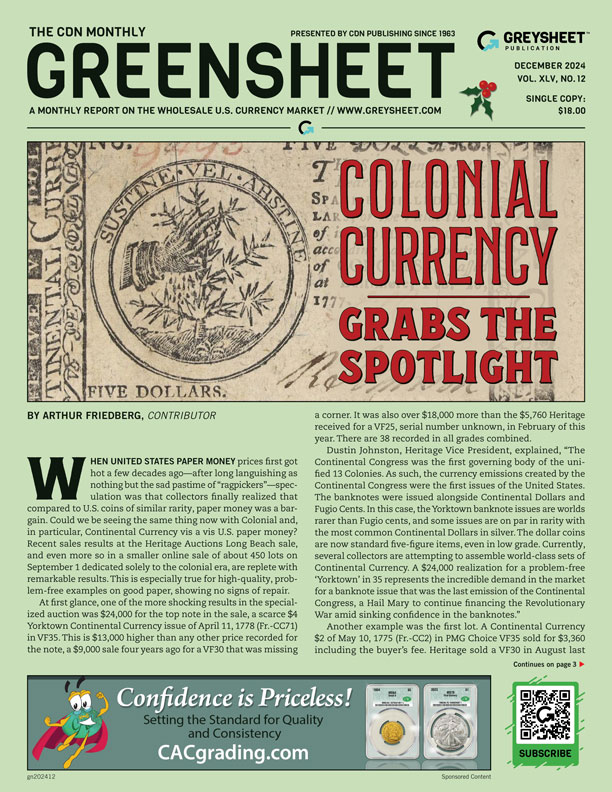
Subscribe to The Greensheet for the industry's most respected pricing and to read more articles just like this.
Author: Patrick Ian Perez


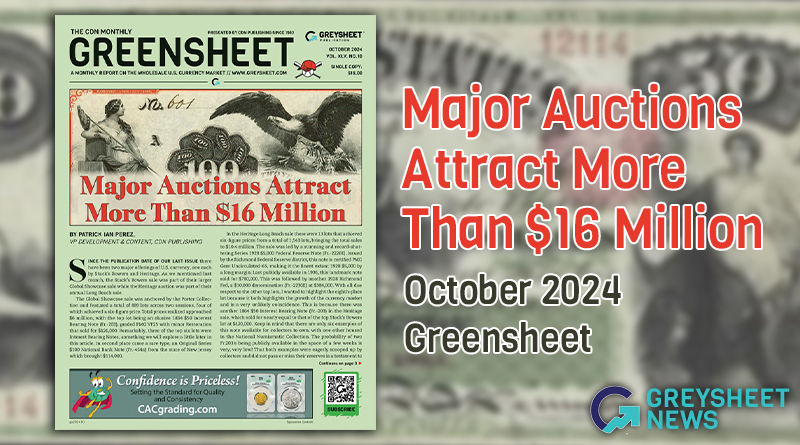





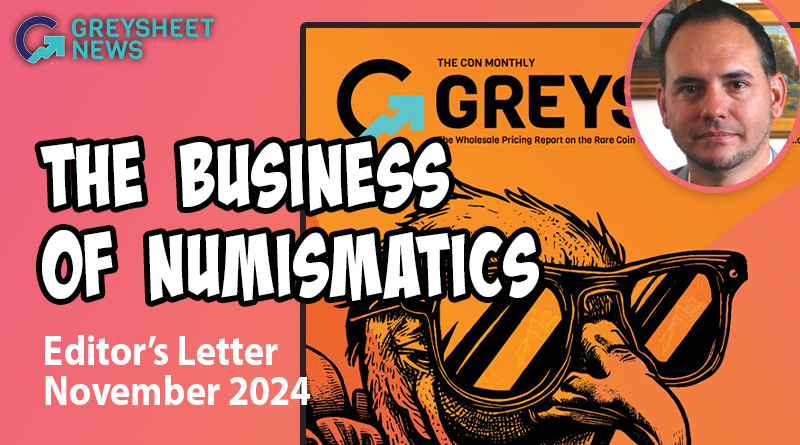
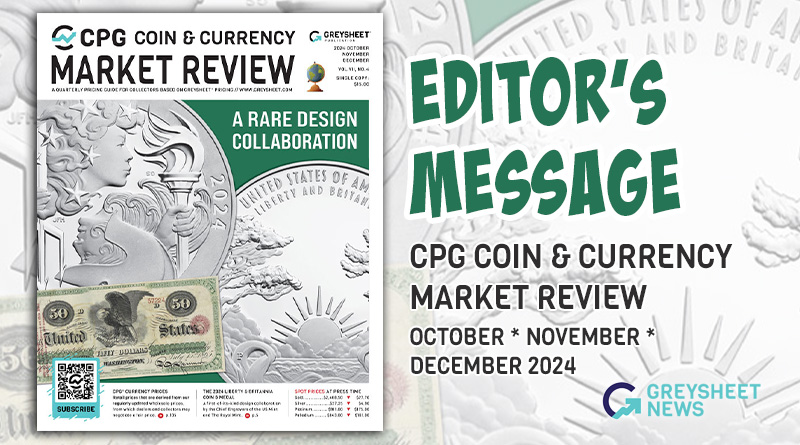
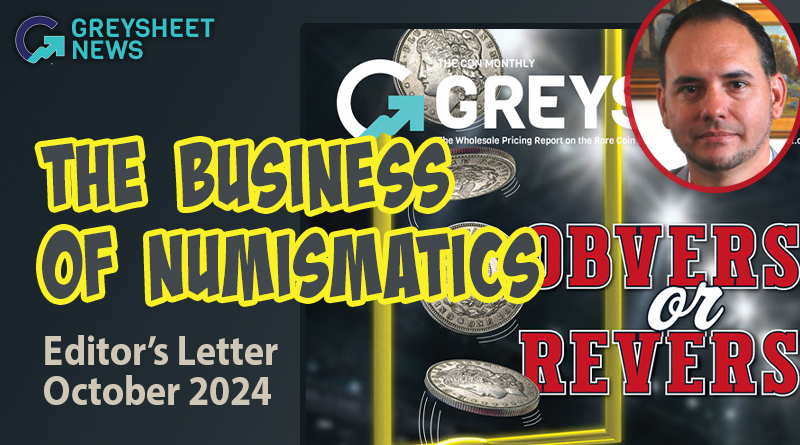
Please sign in or register to leave a comment.
Your identity will be restricted to first name/last initial, or a user ID you create.
Comment
Comments